
Why Eating Cannabis Is Stronger Than Smoking
Cannabis edibles have long been a popular treat. As you might be aware of, their effects can be stronger than any joint you've ever smoked. This article will guide you through the history of edibles and explain why they are so powerful. Also, we'll discuss how to dose them, and what you can do if you've had too much.
Space cakes, THC-infused gummies, weed brownies—you name it; cannabis edibles are one of the most popular ways to consume weed. And they have been for centuries (or even longer)! Compared to smoking or vaping, edibles tend to have stronger and longer-lasting effects. Why? And what does that mean for you?
Read on for a brief history of these special weed-infused foods, and learn how cannabis edibles work in the body, how to dose them, and what to do if you’ve had too much.
Getting to know cannabis edibles
Cannabis edibles are by no means a phenomenon novel to the modern day. Humans have been eating cannabis for about 50,000 years, believe it or not.
A brief history of cannabis edibles
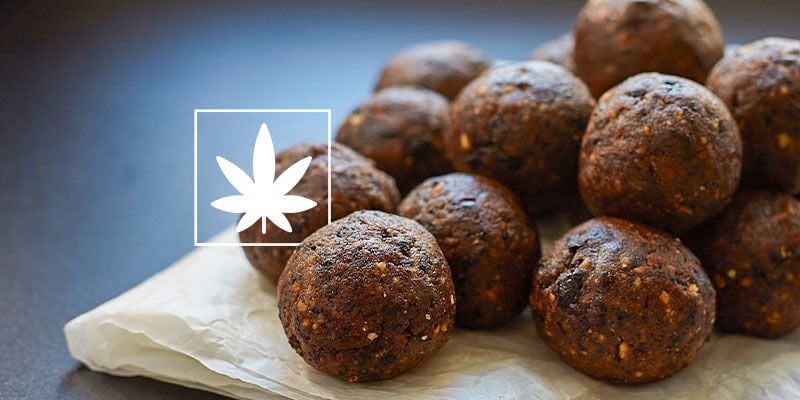
The first human encounters with the plant likely date back to the Stone Age, when humans wandered about, eating whatever seemed attractive and nutritious to them.
Edibles as we know them today have their origins in ancient India and the Middle East. First developed in Persia, cultures across both regions enjoyed versions of a hash-filled confection called “mahjoun” (or “majoun” or “majoon”).
Folk recipes from mediaeval times suggest that cannabis was used as a versatile ingredient, for example in soup, candy, on bread, and even in wine.
And human interest in cannabis continued, with numerous European and American writers of the 1800s finding inspiration in the plant’s effects, consumed in the form of hash-based sweets inspired by mahjoun.
In the 1900s, cannabis was central to the Rastafari ital diet, which favours fresh fruits and vegetables over processed foods and meat. In 1954, Alice B Toklas published a cookbook containing a recipe for a “hashish fudge” that became very famous and later inspired the legendary pot brownies of the 1970s.
Cannabis edibles today
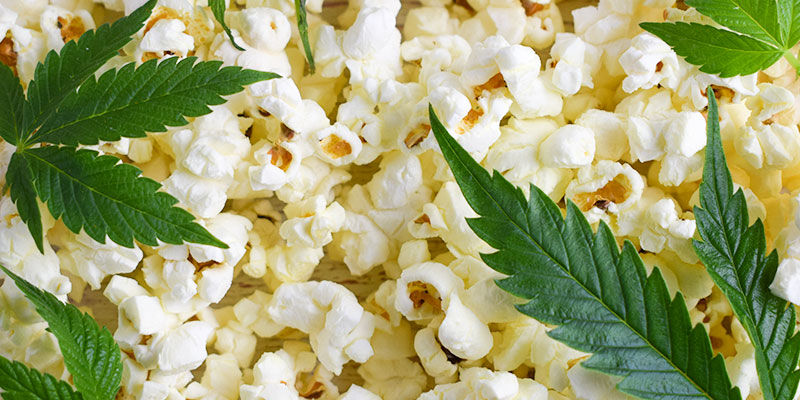
Well, what can we tell you about edibles in the 21st century? Needless to say, edibles continue to be a rather popular way to consume cannabis. These potent, often delicious little things can cause much more intense and prolonged effects than smoked or vaped cannabis.
Some of the most common edibles of the 21st century are:
- Brownies and other baked goods
- Gummies
- Chocolates
- Cookies
- Crisps and other savoury snacks
- Popcorn
- Hard candies
- Infused drinks
While their high potency is the reason many people choose edibles over joints, it’s also why it’s sensible to gain some knowledge about them before taking the first bite of that brownie. Don’t worry; we’ve got you covered. In the next sections, we’ll tell you everything you need to know about why eating cannabis is stronger than smoking or vaping it. And if you want more, check out our general overview about edibles.
Eating vs smoking cannabis: How THC enters the body
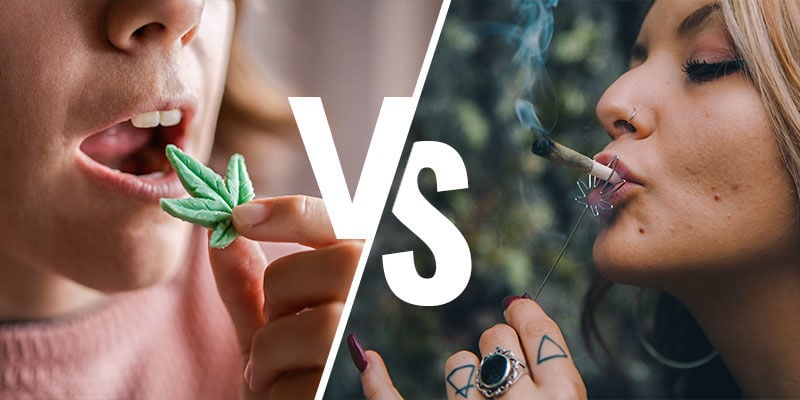
Depending on whether you eat or smoke cannabis, your body will absorb the active compounds in different ways respective to the consumption method. That’s why the effects of edibles can feel quite different to those of smoked or vaped cannabis.
Eating cannabis
When you eat weed, the substance is metabolised differently than if you were to smoke it.
Upon ingesting cannabis, the substance is first processed by the digestive system before passing through the liver, which metabolises the THC and turns a large share of it into a much more powerful molecular form; namely, from delta-9-THC into the metabolite 11-hydroxy-THC (Schwilke et al., 2009).
This form of THC affects the body much more intensely than “normal THC”. It is a lot more potent and has a longer half-life, meaning its effects are stronger and longer lasting (Awasthi et al., 2018).
Smoking cannabis
Metabolism of smoked cannabis is a different affair. Upon inhaling a hit, delta-9-THC diffuses through the alveoli of the lungs into the bloodstream, then swiftly crosses the blood–brain barrier and gets you high in a matter of minutes. Although smoking/vaping cannabis produces some 11-hydroxy-THC, the amount pales in comparison to edible cannabis.
Why cannabis edibles can hit harder
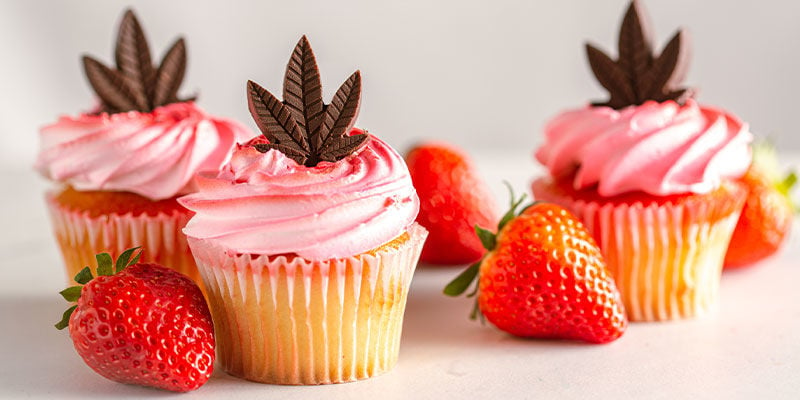
Now, let’s take it a step further and look at the effects of edibles in detail. Understanding these thoroughly will hopefully help you to consume them responsibly and make sure your high is enjoyable.
Dosing
Dosing edibles is no rocket science, and yet it takes a little thought, especially if you’re more used to smoking and/or vaping. Due to the delayed onset of effects, assessing it bite by bite as you might do with a joint doesn’t really work.
Instead, make sure to always measure out how many grams of cannabis, or milligrams of THC, you’re ingesting. In doing so, you can control the strength of your high to a considerable degree. If you’re new to edibles or don’t know the potency of your bud, start with 0.3g or 0.5g of weed.
If you know your material’s potency, below are some basic guidelines on how to dose it. Note that, next to the dose, aspects like tolerance, type of edible, body weight, and metabolism can also impact the magnitude of the effects significantly.
| 1-2,5 mg THC | Microdose |
| 3-5 mg THC | Low dose |
| 10-15 mg THC | Moderate dose |
| 20-30 mg THC | High dose |
| 50-100 mg THC | Very high dose |
| 100-500 mg THC | Extremely high dose |
Again, if you're new to the game, we strongly recommend starting low and slow.
Onset
Usually, edibles kick in around 30 minutes to two hours post-consumption. However, this depends on a few factors:
-
If the material contains a high concentration of THC, this could lead to a quicker onset.
-
Taking a high dose can decrease onset time.
-
Your size, metabolism, and what you’ve eaten during the day impact onset time.
-
The type of edible impacts onset time as the body will need more or less time for digestion.
-
Depending on the type of product, edibles may get broken down in different parts of the body, which impacts onset time too.
Duration
If you smoke or vape cannabis, the effects will dissipate rather quickly. This is not the case with edibles.
Some edible consumers find the effects to fade within 2–4 hours. At the same time, people have also reported feeling high for up to 12–24 hours after ingestion. However, the average experience lasts 4–8 hours.
Keep in mind that, regarding duration, everyone responds differently to these potent foods.
Do edibles bring out cannabis’ true psychedelic nature?
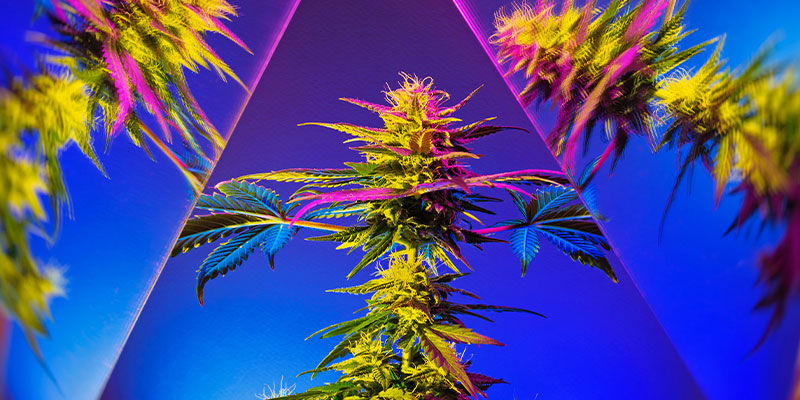
The effects of cannabis edibles are arguably much more amplified compared to smoking or vaping weed.
Like every substance, cannabis has a “sweet spot” in which its effects unfold in the most beautiful form.
If you eat cannabis, its effects can take on characteristics of a trip more in line with those of magic mushrooms. For example:
- Long duration (see above)
- Mild visionary quality, albeit tainted by sleepiness and heavy limbs
- Fits of laughter
So, the sweet spot of edibles can create a high that brings out more of cannabis’ psychedelic or trippy nature than smoking or vaping it.
If you’d like to delve into this a little deeper, check out how cannabis can compare to psychedelics according to Timothy Leary’s five levels of the psychedelic experience.
Too much of a good thing?
The effects of edibles can feel overwhelming, especially if you've had too much. People experiencing a high as too intense often face effects such as:
- Anxiety
- Paranoia
- Racing heart
- Agitation
- Temporary cognitive and motor impairment
While these symptoms can cause discomfort, you can impact how you feel by choosing the right response. Whatever you do, remember that you’ll be out of there in just a few hours. The best you can do is make yourself as comfortable as possible by finding what feels good for you. The following tips may help you to facilitate this.
✅The right company can be a game changer
Try to figure out whether you’d prefer company or isolation. If you choose not to be alone, it’ll probably help to be around someone you trust and feel comfortable with. If that’s not possible, consider calling an experienced friend to talk you down and soothe you with words.
✅Find a safe space
Create a peaceful environment. We recommend soft lightning and a gentle, inoffensive soundscape. If you’re out and about, consider going home, or some other place that feels safe to you. In that case, it might be nice to have company at least for the way.
✅Indulge in beverages and comfort food
As always in life, staying hydrated is key here. If you fancy, you can try drinking some sugary water or sodas, too. Same with sugary foods—at the very least, yummy foods or a glass of fruit juice can be comforting, plus your body might be signalling that it needs some sugar.
✅CBD
If you have some at your disposal, CBD could take the edge off a little as it modifies your cannabinoid receptors, which can make it harder for them to bind with THC.
✅Move your body
An easy walk outdoors or some gentle exercise can soothe your mind. Exercise can also cause your brain to release endorphins; hormones that our body releases when we’re stressed or in pain.
✅Get horizontal
A short nap can give your mind a break, which sometimes is all we need. Keep in mind that sleeping for more than 30 minutes might leave you feeling more tired than you were before napping. Consider setting an alarm, and feel free to try some of the tips above once you’re up again.
Cannabis edibles: Hungry for more?
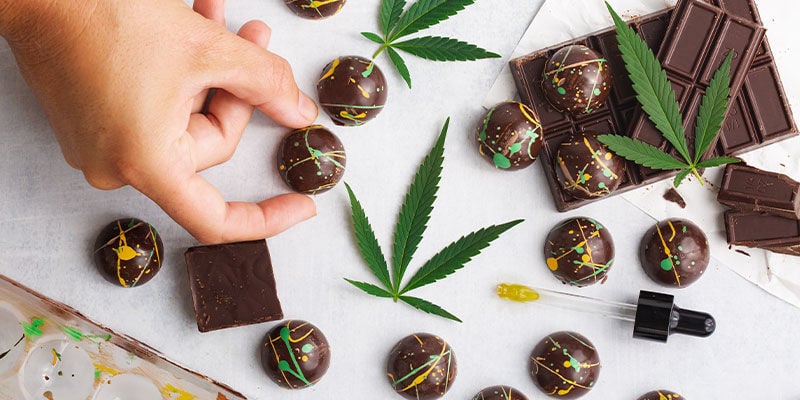
A high from cannabis edibles is an experience all its own. As you now know, ingesting cannabis causes a majority of the THC molecules to convert into a more powerful form.
Luckily, you’ve also learned more about dosing edibles mindfully, what to expect from this special high, and what to do if you’ve had too much.
Do you feel ready to make the perfect edibles yourself? Check out which strains are most suitable for this endeavour, and get into your apron. Or, for some non-THC edibles, consider picking up some infused treats from the Zamnesia store.
- Awasthi, R., An, G., Donovan, M. D., & Boles Ponto, L. L. . (2018). Relating Observed Psychoactive Effects to the Plasma Concentrations of Delta-9-Tetrahydrocannabinol and Its Active Metabolite: An Effect-Compartment Modeling Approach. - https://jpharmsci.org
- Schwilke, Eugene W, Schwope, David M, Karschner, Erin L, Lowe, Ross H, Darwin, William D, Kelly, Deanna L, Goodwin, Robert S, Gorelick, David A, Huestis, & Marilyn A. (2009/12/01). Δ9-Tetrahydrocannabinol (THC), 11-Hydroxy-THC, and 11-Nor-9-carboxy-THC Plasma Pharmacokinetics during and after Continuous High-Dose Oral THC - https://academic.oup.com
-
 7 min
November 2, 2021
What Are The Pros And Cons Of Cannabis Edibles?
If you prefer a cannabis consumption method that's less destructive to the lungs, edibles are your best bet. However, they do come with some pros and cons, each of which we'll discuss in this...
7 min
November 2, 2021
What Are The Pros And Cons Of Cannabis Edibles?
If you prefer a cannabis consumption method that's less destructive to the lungs, edibles are your best bet. However, they do come with some pros and cons, each of which we'll discuss in this...
-
 5 min
February 24, 2021
Best Strains For Making Cannabis Edibles
More than ever before, cannabis chefs are spoilt for choice when it comes to choosing strains for their creations. You can now make edibles based on the flavour, potency, or effects of a given...
5 min
February 24, 2021
Best Strains For Making Cannabis Edibles
More than ever before, cannabis chefs are spoilt for choice when it comes to choosing strains for their creations. You can now make edibles based on the flavour, potency, or effects of a given...
-
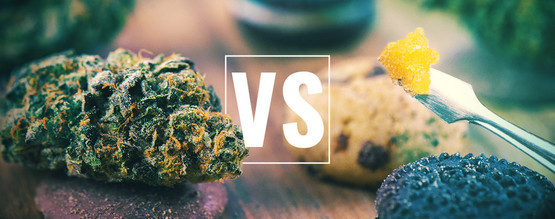 4 min
February 28, 2020
Cannabis Flower Vs. Edibles Vs. Concentrates: Which Is Best?
Perhaps you’re new to the cannabis community. Or perhaps you’ve always enjoyed one particular form of weed, but are wondering what else is out there. Whatever your story, we present to you the...
4 min
February 28, 2020
Cannabis Flower Vs. Edibles Vs. Concentrates: Which Is Best?
Perhaps you’re new to the cannabis community. Or perhaps you’ve always enjoyed one particular form of weed, but are wondering what else is out there. Whatever your story, we present to you the...











 United States
United States








